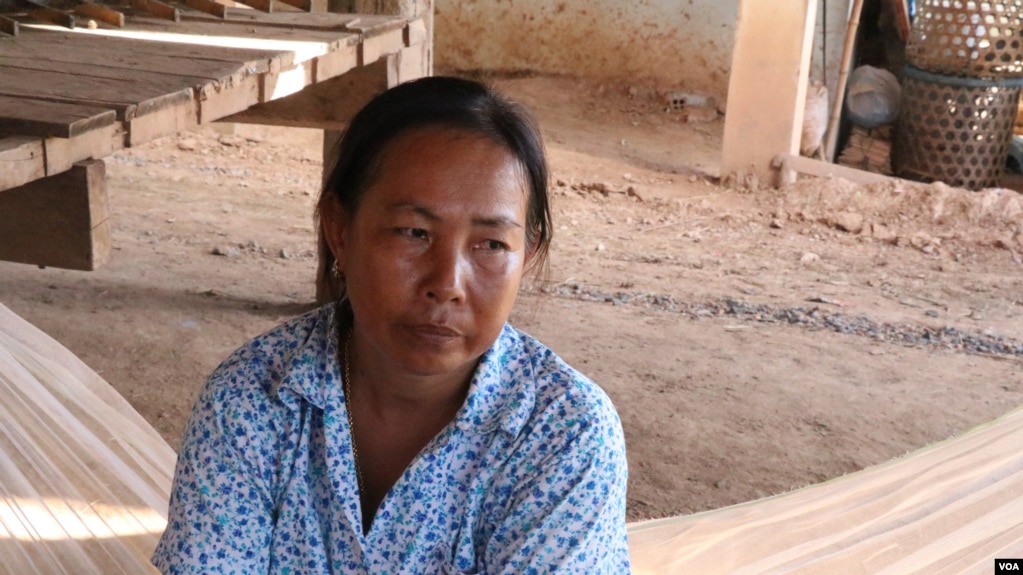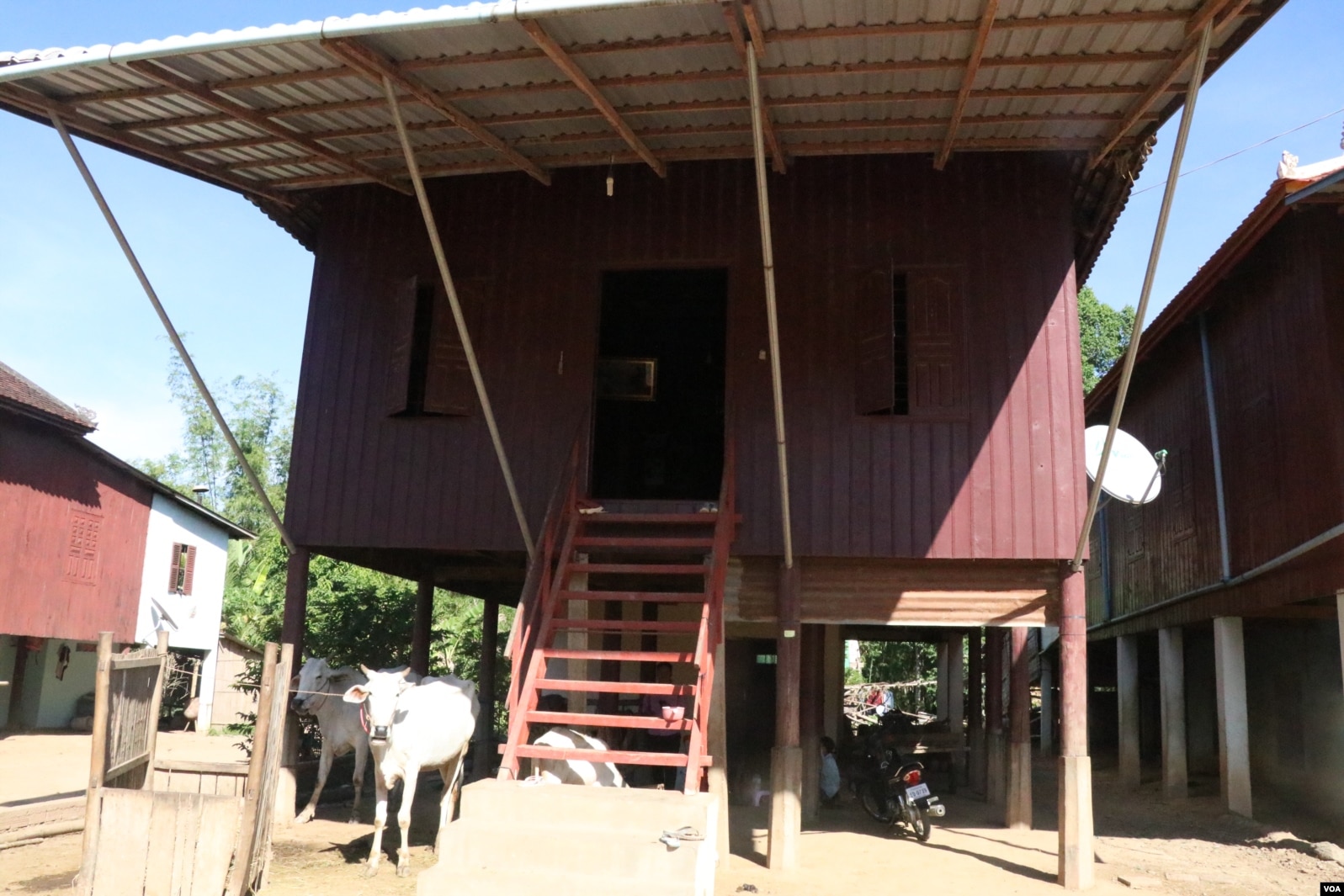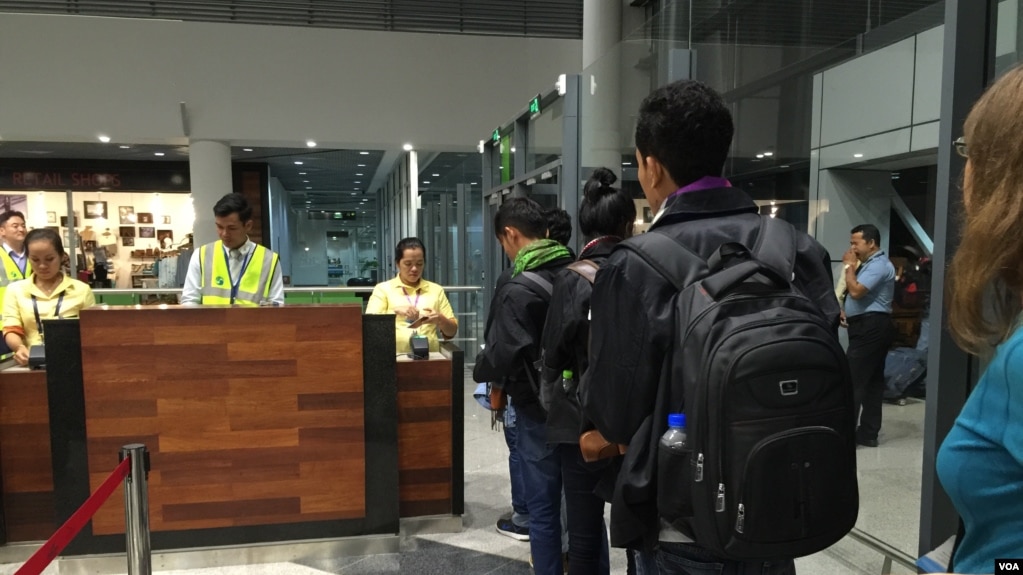In Poor Cambodian Town, Labor Migration to South Korea Provides Income for Many
PREK ACHI COMMUNE, Kampong Cham Province — In 2015, Vin Dyna, then 21 years old, was struggling with the combined study load of his high school curriculum and the private Korean language classes he was following.
He turned to his mother Horm Seang for advice, and she recalled how she did not have to think long about her answer.
“He asked me whether to drop the Khmer or Korean classes – I told him to go for Korean class and then he passed the test,” Horm Seang, 54, said, adding that she encouraged him to start Korean classes a few years earlier.
“I saw many people [in my neighborhood] going to work in South Korea. We were poor, so I decided to ask him to go to work there,” the mother of five told VOA Khmer during an interview in Prek Achi Commune, an impoverished town in a rural region in central Cambodia’s Kampong Cham Province.
Vin Dyna dropped out of high school at grade 11, but reached his goal: He has been working in a car-parts factory in South Korea for almost three years.
He sends home almost $1,000 per month, Horm Seang said proudly, a large amount of money for a family living on a three-acre farm in an area with few other jobs.
The remittances have helped pay off $3,000 in loans that she took out to cover her son’s Korean classes and his travel to South Korea, she said, adding that the family has been able to save some $10,000 and spend $7,000 on renovating their home.
A town dependent on South Korea
Iv Lyhov, the commune chief of Prek Achi, said some years ago several local youths gained employment in South Korea, and word of the good incomes there and ways to migrate spread quickly.
“Villagers see that other families who sent their children to South Korea have improved their living conditions. So they start doing the same,” he said.
“Many [migrants] are youths and villagers who have one or two children. Some dropped out of school” to learn Korean, he said, adding that his daughter and several nephews and nieces had all worked there.
They are among the hundreds of thousands of rural Cambodians – often between 20 to 40 years old – who leave their villagers for other countries or the capital Phnom Penh in search of a decent income for their families.
Both such types of migration have continued to increase despite Cambodia’s robust economic growth in recent years due to a lack of development and growing indebtedness in rural areas, according to researchers.
Often, labor migration is a struggle and there is a risk of being cheated or abused, while there is always the emotional cost of separation.
While Vin Dyna’s migration has been a financial success, it has been bittersweet for his family too. “His father blames me for him going there. If he hadn’t, he could have become a teacher” in Cambodia, Horm Seang said.
Formal migration to South Korea popular
Among the foreign destinations, South Korea is a popular option and there is considerable competition to gain a place among the 4,000 Cambodian workers that the country requests annually.
Dy Thehoya, a program officer with the labour rights group Central, said South Korea offered “better working condition, human rights respect and higher wages” than jobs in Phnom Penh or in other countries.
On average, Cambodian workers in South Korea earn about $1,200-1,300 per month in the agriculture sector and about $1,700-1,800 in the industrial sector, according to the Ministry of Labor and Vocational Training.
By comparison, the garment sector in Phnom Penh offers its 740,000-strong, largely female workforce a minimum wage of around $182.
There are some 54,000 Cambodian workers in South Korea employed in construction, agriculture, and in small and medium industries. They annually send an estimated $300 million in remittances to their families, according to government officials, who encourage the labor migration.
Through a bilateral arrangement with Cambodia, the South Korean government handles the formal recruitment and process for temporary labor migration through its decade-old Employment Permit System (EPS), which sets an age limit of 40 years and includes a Korean-language skills test.
According to an International Labour Organisation (ILO) assessment, South Korea is “one of the few Asian countries” that formally arranges low-skilled migrant labor without involvement of private agencies, while the EPS provides “labour law protections to foreign workers at the same level as those accorded to national workers.”
Additionally, men living in the Korean countryside struggle to find partners and have sought to marry women from elsewhere in Asia, and some 8,000 Cambodian women have married Korean men, according to government figures.
Prek Achi has supplied some of this Korean demand too.
Villager Chorn Nat, 65, said her two daughters married Korean men several years ago. “They have the Korean nationality. They come to visit us and built our house. Now, they just send us $100 per month,” she said.
Informal migration still dominates
Most Cambodian migrants go to other countries where they are more vulnerable, as they enjoy fewer labor protections and rely on private brokers who may abuse or cheat them. A large number are unregistered and slip across the border illegally.
Labor rights groups and the ILO have long called for improved protections for labor migrants in Southeast Asia. In recent years, Thailand and Cambodia have slowly begun to regulate the cross-border flow in order to reduce exploitation and human trafficking of migrants by brokers, employers and corrupt officials.
Some one million Cambodians work in Thailand – the main destination – and half of them are estimated to be unregistered. Malaysia is another important destination, while others go to Singapore, Japan, Saudi-Arabia and Hong Kong. Kuwait has been in talks with Cambodia to request 5,000 workers.
While migrants heading to South Korea are usually better educated and protected against from abuse by their employers than in other countries, they too still face risks of labor abuses, according to Amnesty International, especially if they are employed to work in the agriculture sector.
Abuse risk in South Korea too
A 2017 report found many migrants had to take on large debts in their home countries in order to reach South Korea and once there, they are vulnerable to exploitation and abuse as the EPS is “heavily loaded” towards employers, who can influence a migrant’s legal permission to stay in the country.
“Many migrant workers, including those in the agricultural sector, are forced to work in conditions to which they did not agree under the threat of some form of punishment, including dismissal, non-renewal of their visa or threats of violence; they are effectively subjected to forced labor,” the report said.
Horm Seang said she is in weekly contact with her son Vin Dyna through social messaging apps, but remains concerned over his health and safety.
“My son told me his working place is very hot,” she said. “A year ago, he cut his finger… he stayed in the hospital for month, but he didn’t dare to tell me,” she said.
Pheap Sokha, 32, from Kampong Chhnang Province, who worked at a furniture factory in South Korea the last 18 months as part of a three-year contract, said he experienced a heavy work load and pressure from his boss, but he had no complaints of abuse and enjoyed regular breaks and lunch time.
“The work over there is fine, but sometimes my boss is unhappy with me… He told me to work quickly,” he said.
“In the construction sector in Cambodia, I had lower staff and they call me ‘boss,’ but over there I am the lower staff,” said Pheap Sokha, who migrated despite having a Civil Engineering bachelor’s degree and a job in Phnom Penh.
He said the higher monthly wages in South Korea allowed him to save for his recent wedding, though shortly afterward he had to leave his bride behind to finish the remainder of his three-year contract.
“I think I just work and save some money and will go back when the time comes,” he said. “I am not sure if the factory owner will extend my contract or not. If not, I will go back home.”
No suitable jobs upon return
Many of the thousands of migrants who return, however, face a challenge in finding appropriate jobs in Cambodia, according to labor activist Dy Thehoya, who said this hinders their return and is a lost opportunity for Cambodia’s economy.
“There is no [government] plan for workers from South Korea or other countries to have jobs to do in the country that matches their skills they have learned,” he said.
Spokesman for the Ministry of Labor and Vocational Training Heng Sour acknowledged this situation, but said improved labor protections for migrants abroad were the priority.
“First, we ought to have a system of protections for our fellow migrant workers who are overseas illegally,” he said. “Second, if they are being repatriated, we should provide them with information so they can consider which jobs they can pursue and we also have to certify their overseas work skills and experience.”
Source: VOA





